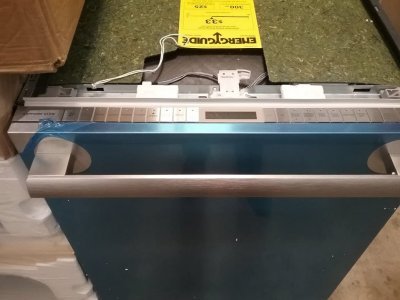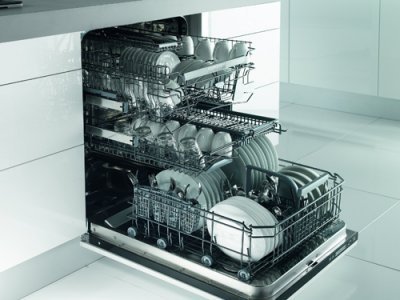Installing a dishwasher in your kitchen can be a daunting task, but it doesn’t have to be. With the right tools and directions, you will be able to hook up your dishwasher with ease. This article outlines the steps necessary for connecting a dishwasher so that it functions properly. Whether you are replacing an old dishwasher or installing one for the first time, these instructions will help you complete the job quickly and correctly.
Table of Contents
Hooking up a Dishwasher:
Hooking up a dishwasher can be an intimidating task, but with the right tools and information, it can be done in an afternoon. Whether you’re replacing an old appliance or installing one for the first time, having a clear picture of what needs to be done ahead of time is key.
The dishwasher must first be connected to plumbing and electrical systems. This requires basic knowledge of water supply lines, drain connections, and 110-volt circuits. To start off the installation process most dishwashers require two sets of hoses – one for hot water supply and another for draining. The water line should have shut off valves installed on either side so that it can easily be turned off when needed.
Tools & Materials Needed:
If you’re planning to hook up a dishwasher on your own, it’s important to have the right tools and materials on hand. To successfully install the appliance, there are certain essential items that must be gathered prior to beginning. Here is a list of what you’ll need when setting up a dishwasher:
First and foremost, make sure you have all of the necessary hardware for installation. This includes mounting screws, washers, bolts and brackets as well as flexible water-supply lines with shutoff valves. Additionally, you should also have an adjustable wrench or pliers available in case tightening any connections is necessary.
Other helpful tools include an adjustable leveler for proper alignment of the dishwasher unit as well as sealants or caulking material to plug any gaps between the countertop and appliance after installation is completed.
Connecting the Water Supply:
Hooking up a dishwasher to the home’s water supply can be an intimidating task, but with the right tools and knowledge it doesn’t have to be. Dishwashers require two separate connections; one for hot water and one for cold. The first step is to locate the shut-off valve that controls your home’s water supply under the sink. Make sure this valve is closed to avoid any potential flooding from occurring. Then disconnect the existing faucet from the cold and hot water pipes in order to add a tee connector, which is where you will attach both of your dishwasher lines. Be sure your connectors are made of durable brass or copper as these materials are approved for use with potable water supplies such as those found in homes.
Connecting Water Supply Lines:
Hooking up a dishwasher is an important part of any kitchen renovation. A properly installed water supply line will ensure that your dishwasher works efficiently and effectively for years to come. Connecting the water supply line doesn’t have to be a daunting task; with some careful planning and the right tools, it can be done in just a few steps.
The first step when connecting the water supply lines for your dishwasher is to turn off the main shut-off valve for your home’s water supply. You should also shut off power to the dishwasher itself before beginning work on any of its components, including the water lines. Once you’ve located the appropriate place in your home’s plumbing system to attach the new water line, use a pipe wrench or pliers to loosen existing hardware so that you can attach it securely using Teflon tape or sealant.

Installing Electrical Wiring:
Installing electrical wiring can be intimidating, but it doesn’t have to be. With the right preparation and tools, anyone can learn how to hook up a dishwasher safely and effectively.
Before starting any wiring project, it’s important to understand the type of circuit you’re dealing with. Dishwashers require either a dedicated 20-amp circuit or a 15-amp circuit shared with other larger appliances. Make sure that you are not exceeding the capacity of your electrical panel before beginning this project. Additionally, consult your local building codes for any additional regulations specific to your area before proceeding.
Once you’ve determined which type of circuit is appropriate for your dishwasher installation, gather all necessary tools and components such as wire cutters/strippers, wire nuts, fish tape, conduit bender (if needed), junction boxes and mounting screws/brackets etc.
Installing the Drain Hose:
Installing the Drain Hose can be a daunting task, especially if you are a novice DIYer. However, with the right tools and instructions, it is relatively easy to hook up a dishwasher. Here’s what you need to know in order to get the job done correctly:
To begin, make sure that your dishwasher is positioned correctly. If necessary, adjust it so that the drain hose lines up correctly with your sink or garbage disposal. Next, attach one end of the hose to the side of your dishwasher with a clamp provided by the manufacturer. Be sure that all connections are tight and secure before moving on to connect this end of the hose to either your sink or garbage disposal. Make sure both ends have been fitted properly and secured tightly with clamps; otherwise, water will leak from connections when running your dishwasher.
Checking for Leaks:
Leaking dishwashers can cause a multitude of problems for homeowners. Water damage, mold growth and higher utility bills are just a few of the complications that come from unchecked appliance leaks. To prevent these issues, it is important to know how to hook up a dishwasher correctly.
The first step in hooking up your dishwasher is to prepare the draining system. A hose runs from the bottom of the unit, connecting it to an opening in your home’s waste disposal system. This outlet should be inspected for any blockages that could impede water drainage and corrected if necessary. Additionally, you will need to mount the dishwasher onto cabinet frames or directly onto walls with mounting screws and brackets, ensuring all attachments are firmly fastened with no loose parts or gaps around them.

Securing the Dishwasher:
If you’re looking to install a dishwasher in your home, the process is surprisingly simple. Hooking up your new appliance is a straightforward task that only requires basic tools and supplies. With just a few steps and some careful preparation, you’ll be able to securely attach your dishwasher without any headaches or hassles.
First, make sure you have all the necessary items on hand for the job: A water supply line connected to the sink’s hot-water line; an electrical outlet; a drain hose connected to the garbage disposal; and some plumber’s tape (or thread sealant). Once you’ve got everything ready, it’s time to start attaching your dishwasher.
Start by connecting the water supply line from the sink’s hot-water valve using plumber’s tape or thread sealant.
Finalizing the Setup:
If you’ve just purchased a new dishwasher and are ready to get it up and running, then this is the article for you. It takes some time and effort, but with the right tools and instructions, you can have your dishwasher setup in no time. Here we will go over the step-by-step process of how to hook up a dishwasher.
Before beginning installation, make sure that all components are included in your package. You should also gather supplies such as Teflon tape, plumber’s putty or silicone sealant, an adjustable wrench, hammer drill and drain hose clamp along with other necessary tools required for your particular model. Once you have obtained all of these items, turn off water supply at the breaker box and disconnect any existing plumbing connections from previous appliance if applicable.



